You’ve probably already encountered localization in your daily life.
Here is an example: Let’s say you like to build your own custom keyboards. You often find yourself shopping directly on Chinese websites — but you don’t speak Chinese.
Luckily, many Chinese e-commerce sites have invested in localization. If you find the right Chinese company, you can easily find what you’re looking for, check out in the currency of your choice, and receive customer support without worrying that you can’t read or speak the language — all thanks to localization.
If you think you would enjoy this experience, you are not alone – 75% of the population will choose whichever service provides them with information in their native language or preferred language.
We’ll dive into what localization is, why it’s important, and what it means for your business:
What is localization?
Localization is the process of adapting a piece of content's full meaning for a new region, including translation, associated imagery, and cultural elements that influence how your content will be perceived.
Localization is all about making your website feel like it was written with that audience in mind. Fully localized content resonates with users because it incorporates relevant cultural nuance to feel familiar instead of simply replacing English words with translated text.
Localization looks at every aspect of your content, including:
- Language: Translation is a crucial aspect of localization, but it’s far from the only part. Transforming your content from your source language to your target language is just the beginning.
- Tone and message: Localization considers what will resonate with your target audience, not just what’s technically correct. Are you trying to persuade them or educate them in your marketing materials?
- Imagery and color: What may be appropriate in one country can be offensive in another. Take, for example, the thumbs-up sign. In the U.S., it means “Good job!” or “Like!” In Greece or Italy, it’s an inappropriate gesture best left out of any designs.
- Date, time, measurement, and number formats: Formats change based on location and may differ even within the same language. In the U.S., the date follows this format: “July 4, 1776.” But in the U.K., that same date would be written like this: “4 July 1776.”
- User interface: The way your audience expects to navigate your website or app changes based on their cultural context and language. Right-to-left languages like Arabic or Hebrew naturally change how you design a page. This is also called software localization.
- Payment method: Offering relevant credit cards and payment processing, in addition to posting prices in the correct currency, matters for e-commerce — otherwise, you may be missing out on customers that would otherwise want to do business with you but can’t make sense of foreign currencies or don’t see a payment option that works for them.
Localization can become highly nuanced to match unique dialects of a specific region within a country or within the same language, depending on your audience. Going back to our U.S. vs. U.K. example, many aspects of the language are different even though they both speak English, from spelling (localization vs. localisation, for example) to vocabulary choices (sweater vs. jumper). That’s why translation isn’t enough — you need to consider the local culture, too.
Today’s world is more interconnected than ever. More than 6,000 languages are spoken in the world today, from Spanish to Swedish. Of those, it takes almost 52 languages to reach the majority of the global audience. So if you’re building a business with a global audience in mind, you need to consider localization top priority.
When do you need localization?
The earlier you include localization in your content creation process, the easier it becomes.
For localization to be successful, however, you need to first perform the process of internationalization. This technical foundation step often gets lumped into translation and localization. Essentially, internationalization is the process by which developers prepare your codebase to support multiple languages and formats.
Generally, that means:
- Separation of the UI elements from source code of content
- Support for multiple languages
- Written text supported in multiple formats like right-to-left, left-to-right, and vertical
- Support for local, regional, and cultural preferences
- Number formats and numeral systems
- Sorting and presentation of lists
- Handling of personal names and locations
- Legal requirements on the back-end
When looking to expand a service or product globally, you must involve internationalization from the beginning of the development process to provide the same experience in every language.
Localization vs. translation: Are they the same?
Translation is a vital part of localization, but they’re not the same. Localization isn’t the same as translation. Going back to the example from earlier about the computer part purchases from Chinese companies – a Chinese website could be translated into English. But if the layout remained optimized for Chinese characters and most of the products on the homepage weren’t available to ship to the U.S., you’d have to take your business elsewhere.
Translation is the process of reworking text from one language into another to maintain the original message and communication. It’s literally the translation of words. There are two main types of translation used today:
- Machine translation offers a fast, cost-effective way to translate different language pairs, delivering results in minutes or seconds.
- Professional translators offer high-quality translations and deep cultural nuance for complex or specialized projects, such as international SEO or subtitles.
While translation is simply about converting written words from one language into another, localization takes it one step forward, looking at the culture of a region and the related nuance in language as it relates to that culture.
3 examples of real-world localization
So, what does localization look like in a business context? Let’s look at a few of the best global companies and how they approach localization:
- McDonald’s has a global scale with 36,000 fast food locations in more than 100 different countries worldwide. They adapt their menu and prices based on the market, from a McSpicy Paneer in India (fried paneer cheese, tandoori sauce, and lettuce) to poutine (french fries with gravy) in Canada.
You can see this in how they present their key offers to their audiences in the U.S. (top) and Spain (bottom):

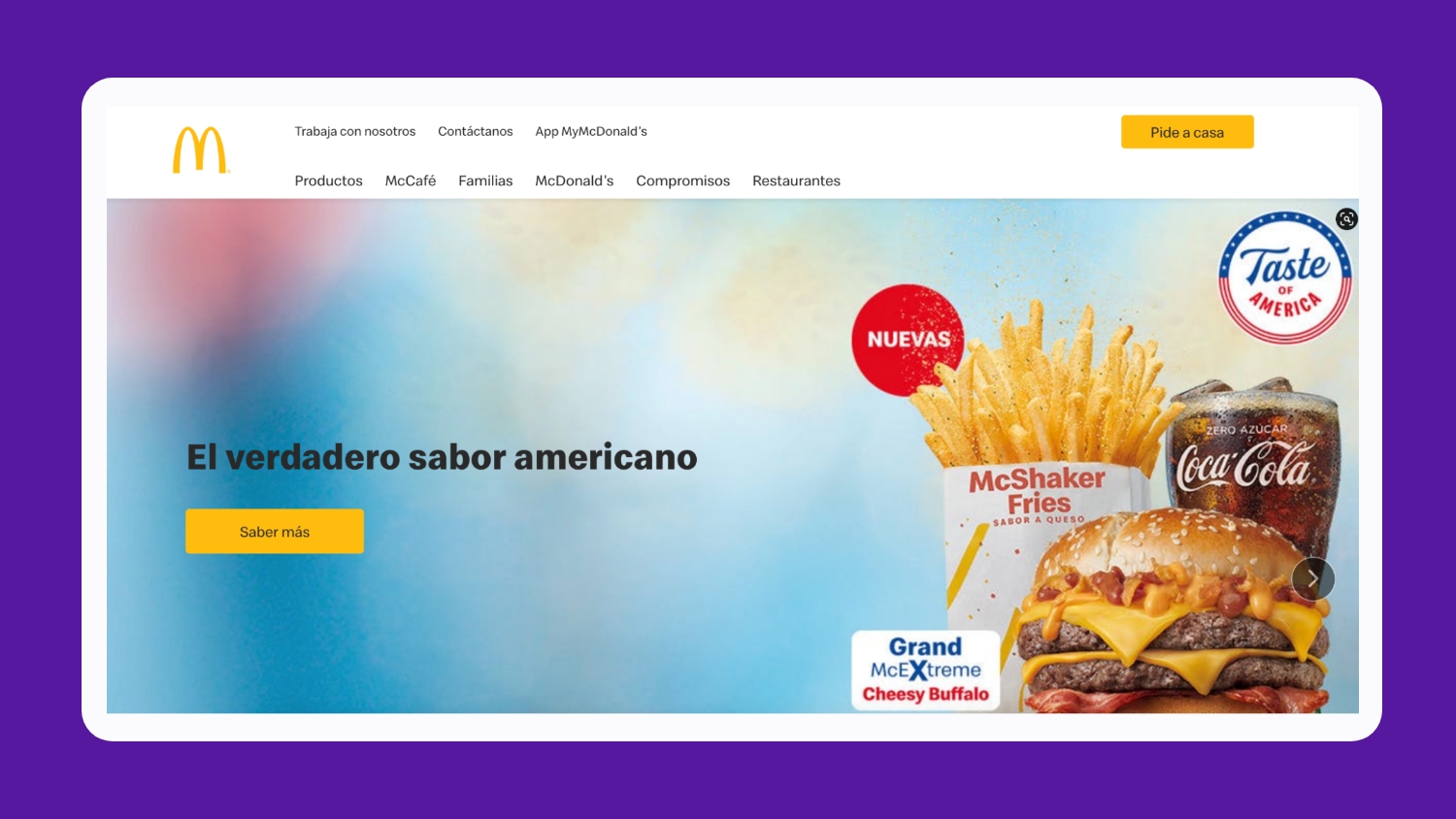
McDonald’s didn’t just change the language. They used totally different offers, colors, and layouts. The American website advertises a discount program that incentivizes joining the McDonald’s app, while the Spanish version advertises several new menu items as part of their “Taste of America” campaign.
- Nike sneakers and sports apparel can be found in over 170 countries, but they change their network of influential sports celebrities, from soccer phenom Cristiano Ronaldo to basketball star LeBron James and tennis champion Rafael Nadal.
You can see how they approach specific target markets completely differently, from their featured products and imagery on their U.S. homepage (top) with their French homepage (bottom).
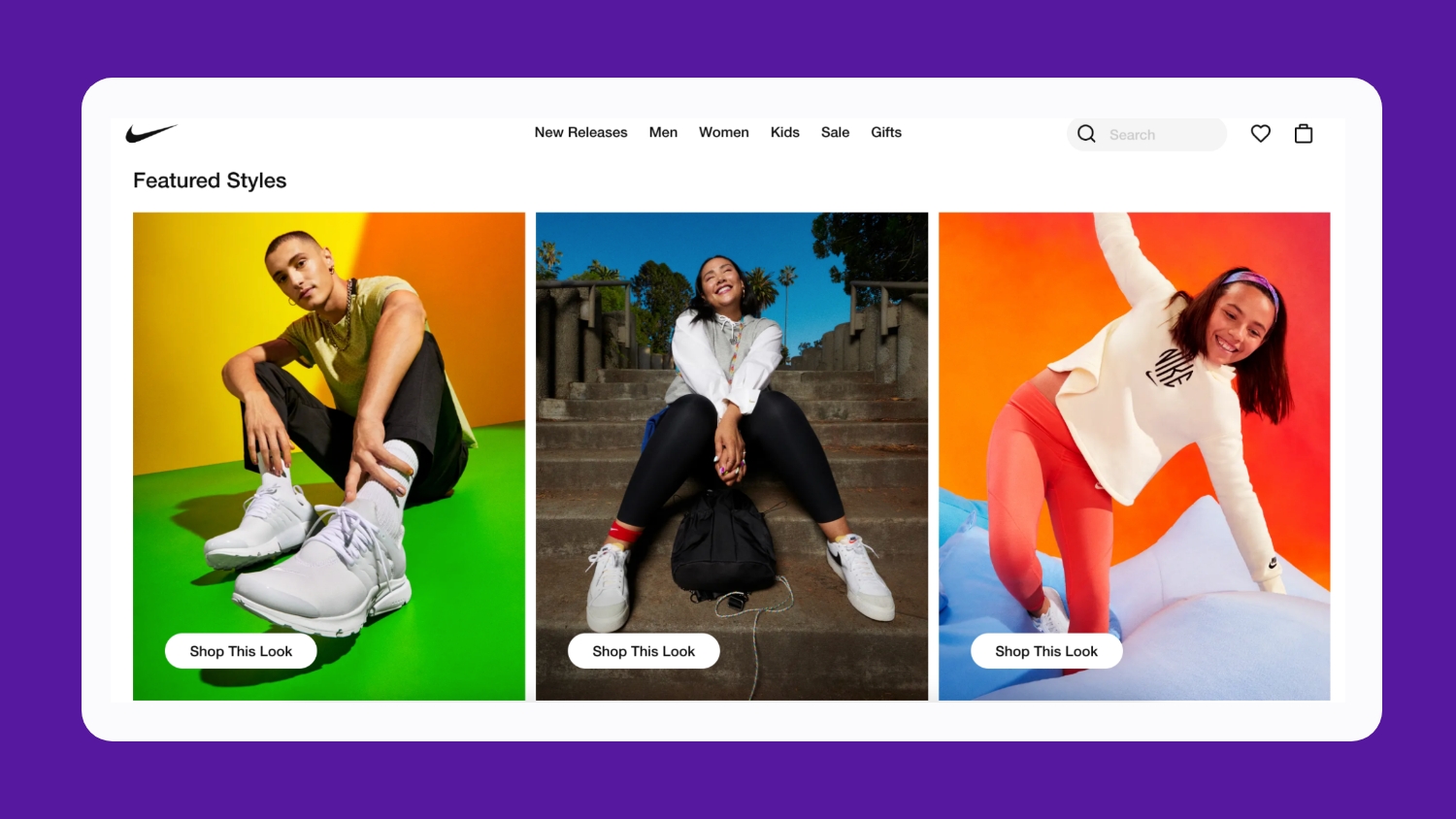
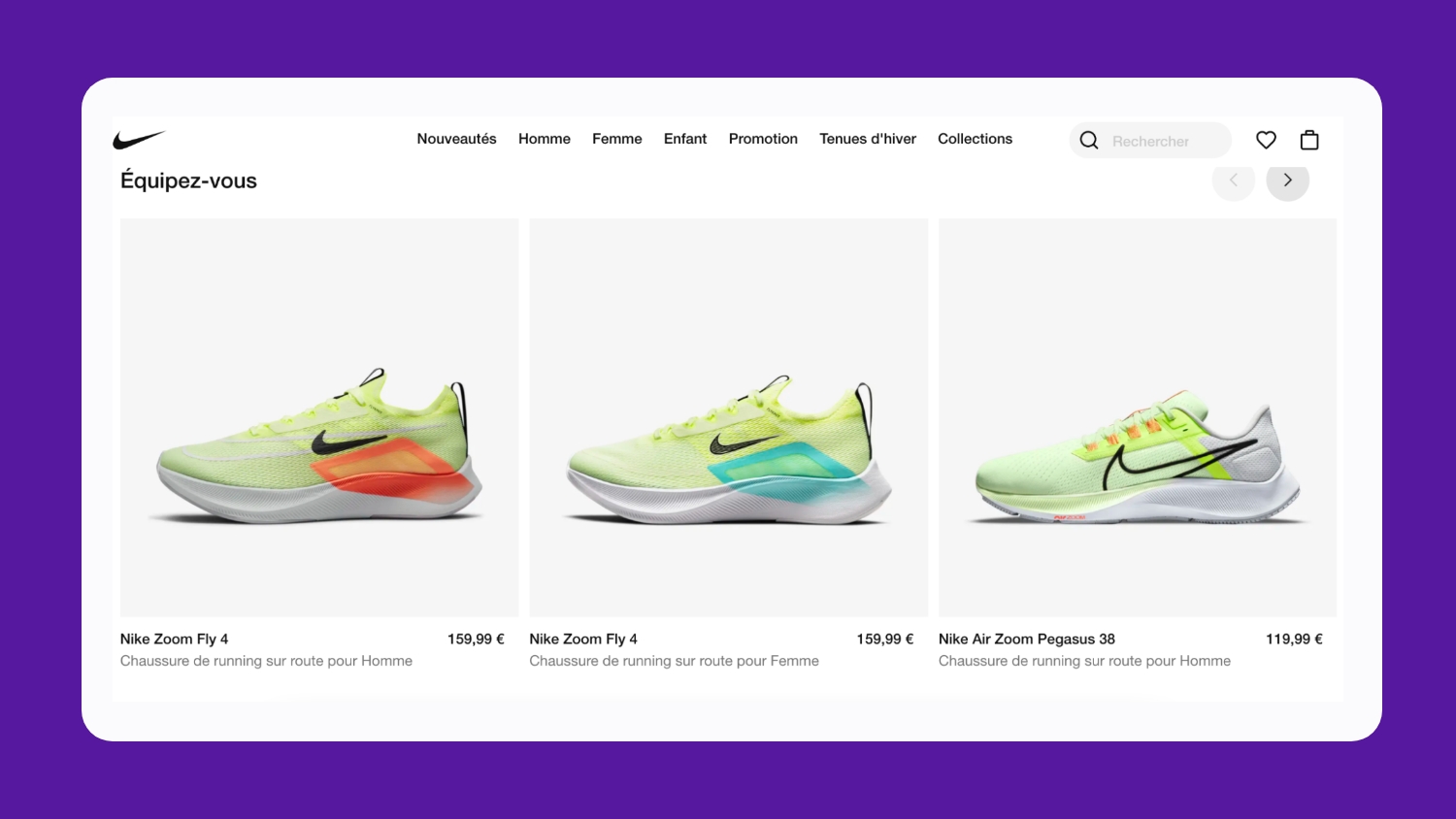
Overall, the French website is much more minimalistic, with a focus on the shoes themselves rather than the colorful, bright imagery on the U.S. page. There are also more price tags on the French page than on the American one, which instead encourages you to “Shop the look.”
- Coca-Cola’s localization approach means you can order a “Coke,” a “Cola,” or a “Coca” (which has a slightly different formula) depending on the market. What makes this work across their 200+ countries is universal marketing messages of sharing and joy.
It’s not just the formulas that are different. You can see completely different messaging, layout, and formatting between the U.S. homepage (top) and their Chinese one (bottom):
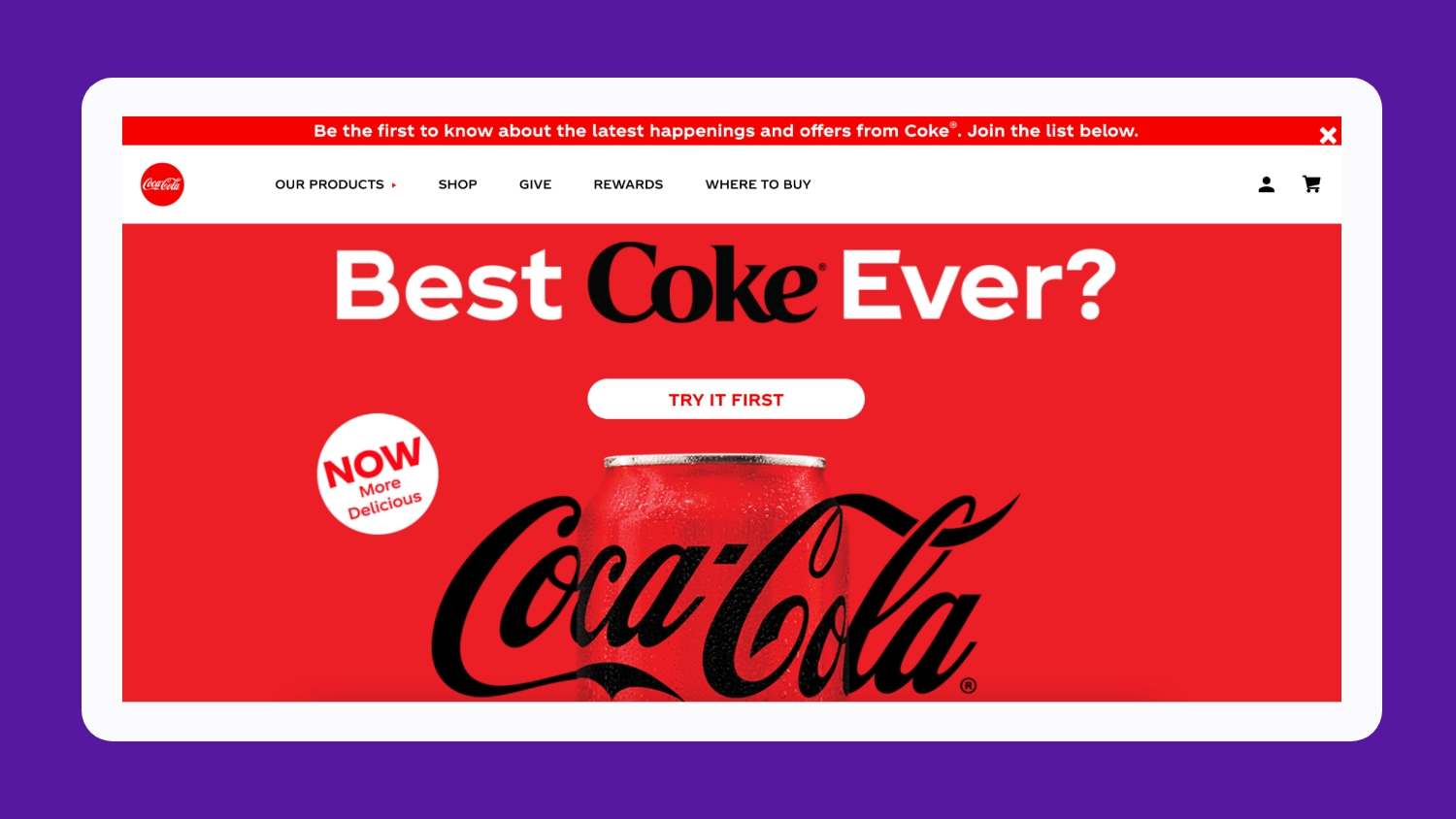
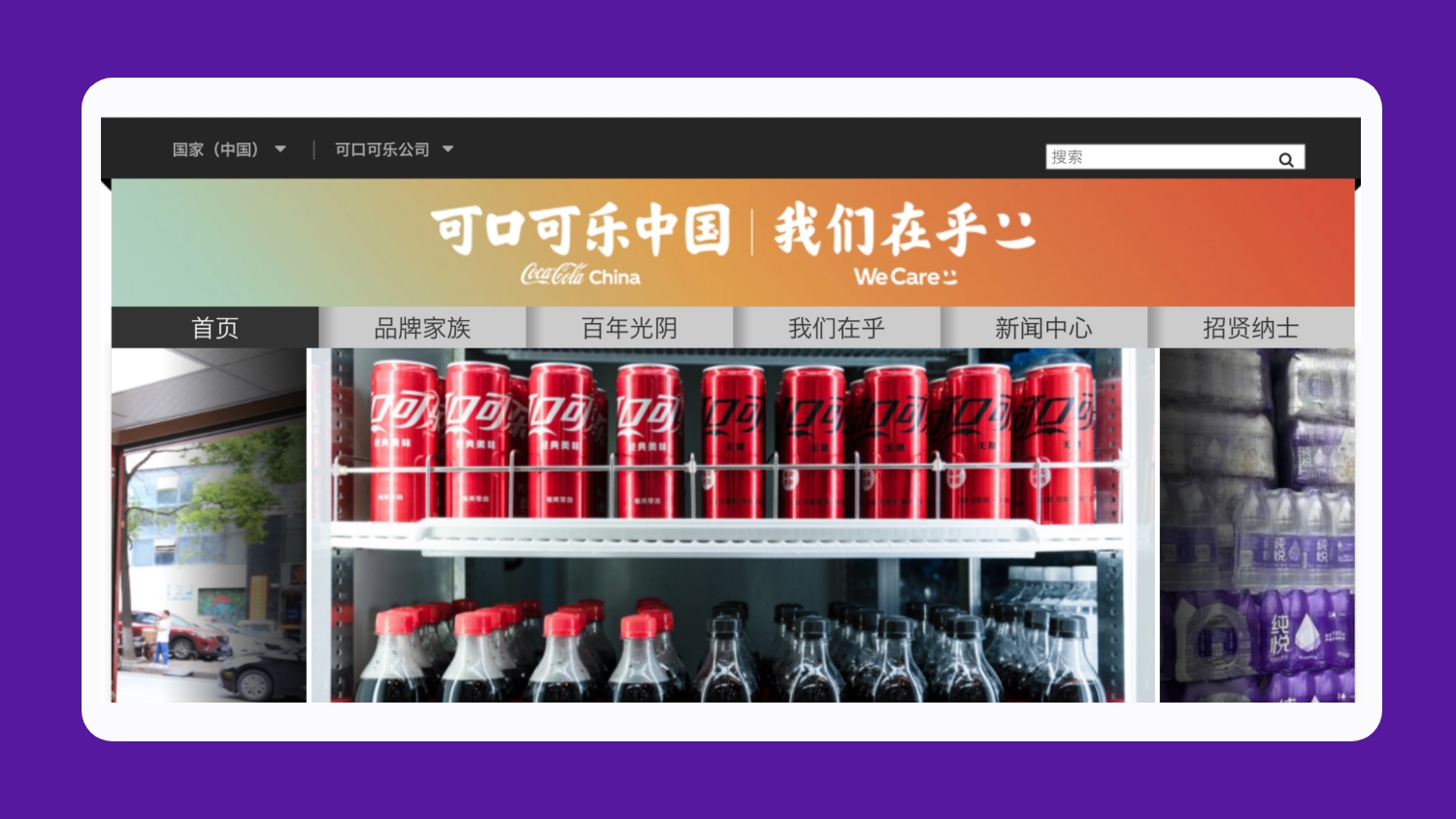
Language is only the beginning of website localization, from the navigation, colors, and imagery. It’s also clear from the two images that the packaging design is entirely different, with taller, thinner Coke cans in China and more rounded bottles in the U.S.
Localization unlocks new revenue streams for your brand
Localization is your brand's key to unlocking these new markets. By offering your brand experience in a language that feels familiar, users will be much more likely to engage with your content and ultimately make a purchase.
At Smartling, we’ve worked with hundreds of customers across industries to help bring their online presence to life in multiple languages. Here are a few examples of what localization can do for your business:
- IMVU, an online 3D Avatar Social App with virtual worlds for users to join for a community experience. After localizing their application for global usage, IMVU saw a 45% increase in iOS app registrations and a 43% increase in Android app registrations.
- Lucidchart, an online diagram software and visual collaboration solution, saw a 200% year-over-year growth in their Latin American user base, jumping from zero to 125k localized users in just four months after localizing their platform for the Latin America market.
- Dashlane, a cross-platform premium password manager and digital wallet application, had a 4x increase in active users in just one year after translating their content and localizing for users around the world.
How to choose a localization partner
Localization isn’t without its challenges. Translating and localizing your entire brand experience, website, application, or even just digital content can seem like a monumental task. Without the right localization partner, you might be stuck juggling emails and spreadsheets in multiple languages, managing freelance translators from around the world, or struggling to understand timelines and transparency into the localization process.
With the right mindset, strategy, and tools in place, brands can turn translation from a cost center into a revenue center. And that's exactly where Smartling fits in. Smartling helps brands customize localization workflows, so they work for teams around the world, in just a few steps:
- Smartling integrates with your content management system. Anytime you update or create new content, that content is automatically parsed into strings and sent to a translator.
- Your assigned translators complete the work, tracking their progress and communicating directly with you throughout in case there are any questions.
- When the translations are all set, it automatically goes back into your CMS, and you click Publish.
Smartling's cloud-based Translation Management System makes it easy for brands to offer content on a global scale at a rapid pace while providing complete transparency into the entire process.
Make localization easy with Smartling
Smartling offers a world-class translation software solution built for you however you plan to scale your business. Professionally translate and localize all of your content across devices and platforms without sending a single email, touching any button, or managing strings in spreadsheets.
Speak with one of our experts today to learn more about how Smartling can help your brand go global.








